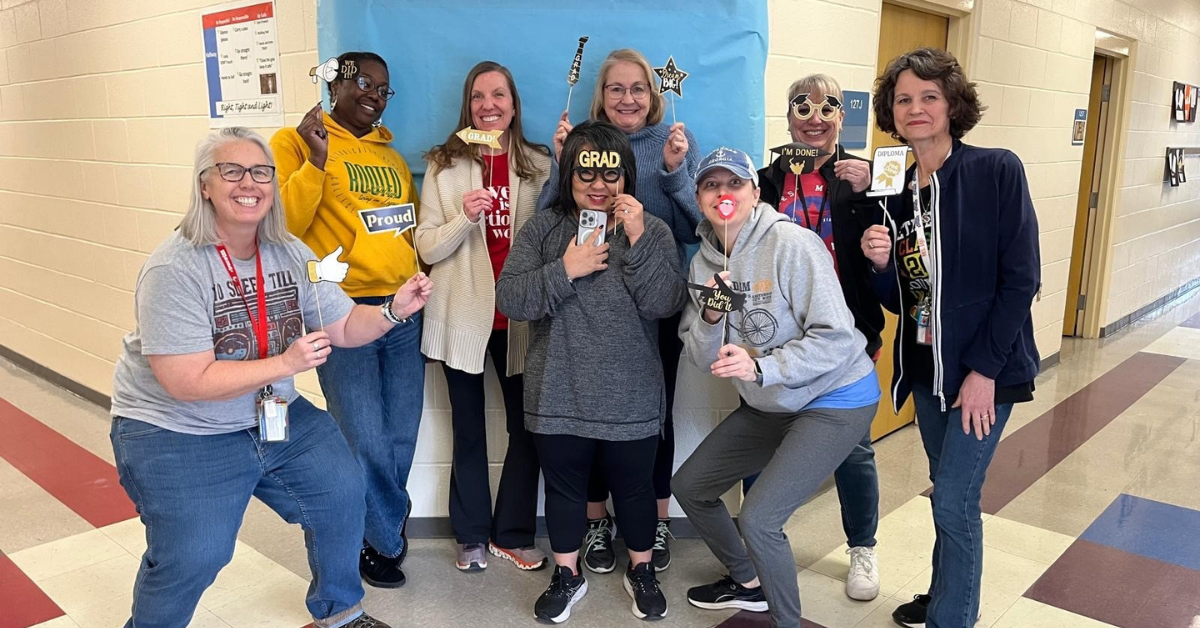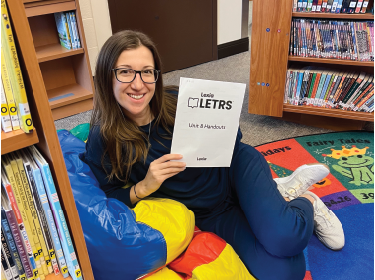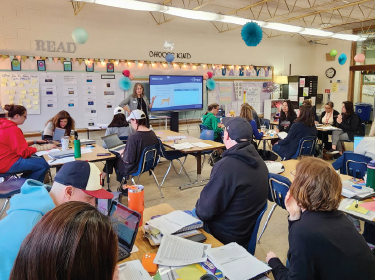- Columbus City Schools
- Homepage
The Write Stuff: CCS Teachers Set Ohio Standards and Conquer LETRS Training

May 07, 2025 -- After four years and eight intensive units of LETRS (Language Essentials for Teachers of Reading and Spelling) professional learning, Columbus City Schools (CCS) K-5 teachers celebrated their hard work as they graduated from their final unit of training in March.
 “LETRS is professional learning for teachers to help them understand the how, the what, and the why of literacy acquisition – how educators teach students to read,” said Amber Bernal, CCS English Language Arts Coordinator. “It gives teachers theoretical models, practical application – such as what's happening in our brains when we're reading – and many strategies to use in the classroom. I equate it to a graduate-level course.”
“LETRS is professional learning for teachers to help them understand the how, the what, and the why of literacy acquisition – how educators teach students to read,” said Amber Bernal, CCS English Language Arts Coordinator. “It gives teachers theoretical models, practical application – such as what's happening in our brains when we're reading – and many strategies to use in the classroom. I equate it to a graduate-level course.”
Through the eight unit course, teachers learned the science and research behind how to teach reading to K-5 students. Once they had a strong foundational knowledge, the teachers learned practical strategies they could utilize in their classrooms to help their students become strong readers.
“Overall, I have made many changes to my instruction as a result of LETRS training and these sessions,” said Trevitt Elementary first grade teacher Regina Johnston. “I have taken away so much knowledge about how my students learn the skills needed to become proficient readers and writers. It has changed how I provide instruction.”
Johnston is thankful to have learned the science behind how her students read and write. She believes this has better equipped her to teach word recognition and language comprehension—two essential skills for becoming a skilled reader.
“The training helps teachers adjust their instruction and be more responsive to what students need,” Bernal said. “A lot of it is hands-on, and when teachers go to teach their students the next day, they can try out what they learned and see how it's going to work with their group of students.”
Bernal plays an active role in LETRS training. After reviewing student data and engaging in extensive discussions with stakeholders, the literacy team knew they needed to change how CCS teaches literacy. The Ohio Department of Education and Workforce (ODEW) guided them to look into the Science of Reading and move away from Balanced Literacy, the model the District previously followed.
”The curriculum department and the literacy team started doing some research, learning, and investigating on our own,” Bernal said. “We looked at three different Science of Reading professional learning options. LETRS is considered the gold standard.”
With the federal Elementary and Secondary School Emergency Relief (ESSER) funds, CCS could obtain the funding and provide training directly to every K-5 grade teacher. There was still an additional hurdle after defining where the funds would come from and securing the company that provides the presenters for LETRS, Lexia. Lexia had a rule of only sending 20 presenters to a district on a given day. CCS would require almost quadruple that number to meet the needs of the District.
 “We asked for 75 right out of the door,” Bernal said. “Amazingly, they did it! They sent 75 national presenters eight times, once for every unit.”
“We asked for 75 right out of the door,” Bernal said. “Amazingly, they did it! They sent 75 national presenters eight times, once for every unit.”
LETRS is professional learning based on the Science of Reading, a body of research that CCS started following before it became an Ohio requirement in 2024. With that change also came House Bill (HB) 436 and 33.
“When the Dyslexia Supports, HB 436 came out, it put us in a position to have already met that professional development requirement,” Bernal said. “It required the first three units of LETRS or 18 hours of the Science of Reading, and we covered that already. When other districts had to scramble to put things in place or figure out what they were going to do, we were already there.”
And again, CCS was already ahead of the state when HB 33 came out in March 2024. HB 33 stated that by June 30, 2025, every educator in the state of Ohio is required to have a Science of Reading professional development course completed.
“It feels good to be leading the pack,” Bernal said.
Bernal also mentioned how exciting it is to see teachers using what they learned and making significant changes to their teaching. She noted that they see how it positively impacts their student literacy data.
“So often professional development is what they call one-and-done,” Bernal said. “Where we get something, but we don't come back to it. Having this consistent sequential and cumulative process that teachers have gone through, hitting all of the critical components of literacy and that everybody got the same message at the same time, it just provides that consistency for our instruction that is really hard to do in a district our size. I think that's major, and CCS deserves a big pat on the back for that because it was not a small feat when we started this.”
Through Johnston’s three-year LETRS journey, she has seen growth within herself as a teacher and with the students across three different grade levels.
Bernal said this increase in teacher confidence and student success is what the LETRS training is all about.
“The end goal really is that our literacy instruction, reading and writing will be greatly impacted,” Bernal said. “And that we will see those gains in student achievement levels as far as literacy is concerned. We know when you impact literacy, you're going to impact other content areas as well. The goal is to move more and more students out of our schools at higher proficiency levels than we currently are.”

